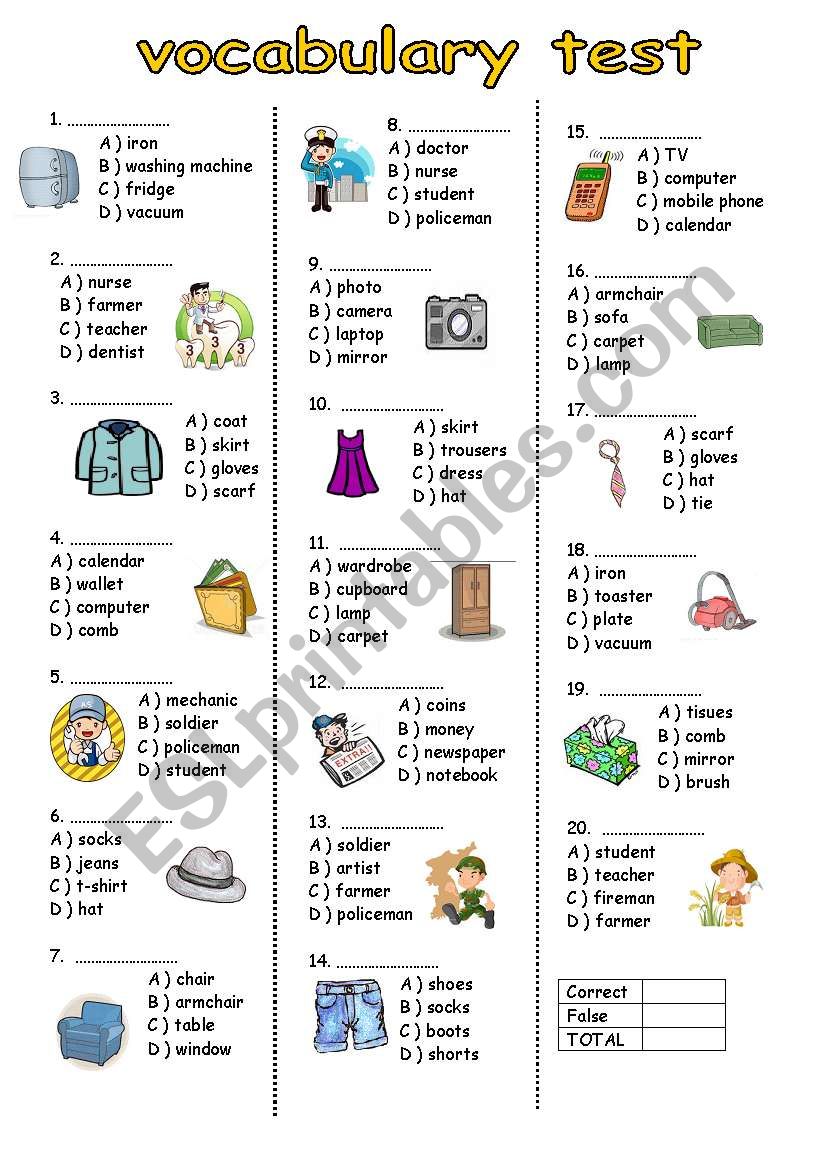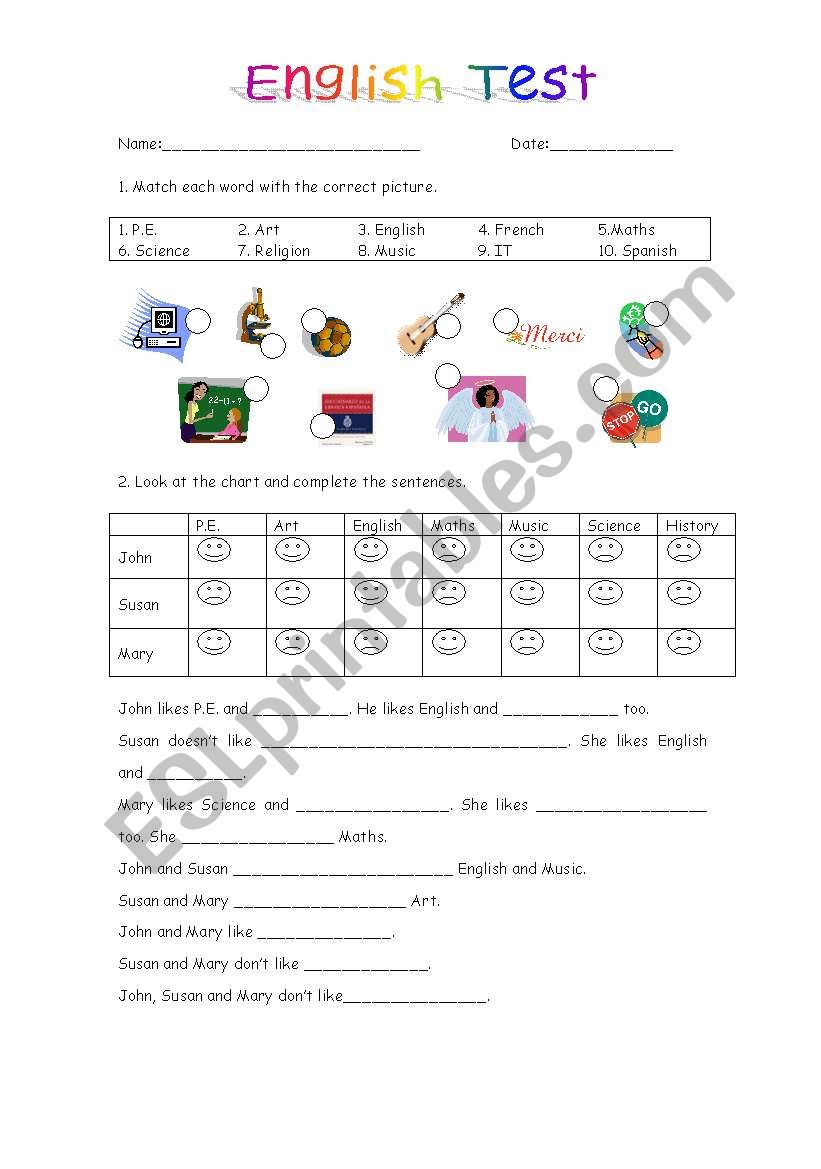
Unlocking Potential: The Indispensable Role of Elementary ESL Worksheets in Language Acquisition
In the dynamic world of language education, particularly for young learners, the journey of acquiring English as a Second Language (ESL) is both challenging and incredibly rewarding. Elementary school is a critical period for language development, laying the foundational bricks for future academic and social success. Amidst a plethora of teaching methodologies and resources, Elementary ESL worksheets stand out as a foundational, versatile, and highly effective tool that empowers both educators and students in this vital process.
This comprehensive article will delve into the multifaceted importance of Elementary ESL worksheets, exploring their types, benefits for both students and teachers, strategies for effective design and integration, and where to find high-quality resources.
The Crucial Role of Worksheets in Elementary ESL Education

For elementary ESL students, who are often navigating a new language alongside a new culture and academic system, traditional classroom instruction alone may not suffice. Worksheets provide a tangible, structured, and repeatable means of practice and reinforcement that caters specifically to the needs of young language learners.

At this age, children are highly visual and kinesthetic learners. The act of seeing words, pictures, and diagrams, and then physically writing, matching, or drawing, significantly aids comprehension and retention. Worksheets bridge the gap between abstract linguistic concepts and concrete understanding, allowing students to process information at their own pace and build confidence through successful completion of tasks. They transform what might otherwise be overwhelming oral input into manageable, bite-sized learning activities.

Types of Elementary ESL Worksheets: A Diverse Toolkit

The beauty of Elementary ESL worksheets lies in their immense variety, allowing teachers to target specific language skills and learning objectives. Here are some of the most common and effective types:

-
Vocabulary Worksheets: These are perhaps the most ubiquitous.
- Matching: Pairing words with pictures, definitions, or synonyms/antonyms.
- Fill-in-the-Blanks: Using target vocabulary words to complete sentences.
- Labeling: Identifying objects or parts of a picture.
- Word Searches & Crosswords: Fun, engaging ways to reinforce spelling and recognition.
- Categorization: Grouping words by theme (e.g., animals, food, clothes).



-
Grammar Worksheets: Essential for building sentence structure and fluency.
- Verb Conjugation: Practicing present, past, future tenses, and irregular verbs.
- Sentence Scrambles: Unscrambling words to form grammatically correct sentences.
- Prepositions: Choosing the correct preposition for location or time.
- Articles (a, an, the): Practicing appropriate article usage.
- Pronoun Practice: Identifying and using subject, object, and possessive pronouns.
- Question Formation: Reordering words to form questions or answering questions based on prompts.
-
Reading Comprehension Worksheets: Developing understanding of written text.
- Short Passages with Questions: Answering multiple-choice, true/false, or open-ended questions based on a simple text.
- Sequencing: Ordering events from a story or process.
- Main Idea & Details: Identifying the central theme and supporting facts.
- Picture Stories: Arranging picture cards in sequence and then writing captions or a short story.
-
Writing Practice Worksheets: Guiding students in producing written English.
- Sentence Starters: Providing a beginning for students to complete.
- Guided Paragraph Writing: Using prompts, outlines, or word banks to construct a short paragraph.
- Tracing & Copying: Practicing letter formation and simple words/sentences.
- Picture Prompts: Writing about a given image or series of images.
-
Listening Comprehension Worksheets: Often paired with audio, these require students to process spoken English.
- Following Instructions: Drawing, coloring, or performing actions based on verbal commands.
- Answering Questions: Listening to a short dialogue or story and answering questions.
- Identifying Sounds/Words: Circling pictures or words corresponding to sounds heard.
-
Phonics and Pronunciation Worksheets: Focusing on the sounds of English.
- Letter-Sound Matching: Connecting letters to their corresponding sounds.
- Rhyming Words: Identifying words that rhyme.
- Beginning/Ending Sounds: Filling in missing initial or final sounds.

Benefits for Students: Empowering Young Learners
The positive impact of Elementary ESL worksheets on students is profound and multifaceted:
- Reinforcement and Practice: Language acquisition thrives on repetition. Worksheets provide a structured environment for students to repeatedly engage with new vocabulary and grammar rules until they become automatic.
- Structured Learning: For young learners, clear, step-by-step tasks reduce cognitive load and anxiety, making the learning process more manageable and less intimidating.
- Visual Support: The integration of images, colors, and clear layouts helps visual learners connect new words and concepts with concrete representations, enhancing comprehension.
- Confidence Building: Completing a worksheet successfully gives students a tangible sense of accomplishment, boosting their self-esteem and motivating them to continue learning.
- Independent Learning: Worksheets allow students to work at their own pace, fostering self-reliance and encouraging them to take ownership of their learning journey. This is particularly valuable in diverse classrooms where students have varying proficiency levels.
- Assessment Tool: For both students and teachers, worksheets serve as informal assessment tools, highlighting areas of strength and identifying concepts that require further attention.
Benefits for Teachers: Streamlining Instruction
Teachers also reap significant advantages from incorporating worksheets into their ESL curriculum:
- Time-Saving: Ready-made worksheets save valuable preparation time, allowing teachers to focus on instruction and individual student needs.
- Differentiation: Worksheets can be easily adapted or selected to cater to different proficiency levels within the same classroom, ensuring that all students are appropriately challenged.
- Assessment and Progress Monitoring: Worksheets provide concrete evidence of student learning, enabling teachers to track progress and adjust their teaching strategies accordingly.
- Classroom Management: Worksheets can keep students productively engaged during independent work times, small group activities, or while the teacher works with other students.
- Curriculum Alignment: High-quality worksheets are often designed to align with specific curriculum objectives, ensuring that key language skills are covered systematically.
- Variety in Instruction: They offer a break from purely oral or interactive activities, providing a diverse approach to learning that caters to different learning styles.
Designing Effective Elementary ESL Worksheets
While readily available worksheets are a boon, understanding the principles of effective design can help teachers select or create their own tailored resources. When creating or choosing Elementary ESL worksheets, consider the following:
- Age Appropriateness: Content, vocabulary, and task complexity must match the cognitive and linguistic development of elementary students. Use simple language for instructions.
- Clear Instructions: Instructions should be concise, unambiguous, and ideally supported by visuals or examples.
- Visual Appeal: Use engaging graphics, clear fonts, ample white space, and perhaps a touch of color to make the worksheet inviting and less overwhelming.
- Gradual Difficulty: Start with easier tasks and progressively introduce more challenging ones within the same worksheet or across a series.
- Focus on One or Two Skills: Overloading a single worksheet with too many objectives can be counterproductive. Focus on reinforcing a specific vocabulary set, grammar point, or reading skill.
- Interactivity: Incorporate elements that require more than just writing, such as cutting, pasting, drawing, or coloring, to engage kinesthetic learners.
- Authenticity and Relevance: Whenever possible, connect the worksheet content to real-world scenarios, student experiences, or cultural topics that resonate with young learners.
Integrating Worksheets into the ESL Classroom
Worksheets should not be used in isolation but integrated thoughtfully into a comprehensive language program. Here are some ways to incorporate them effectively:
- Warm-ups/Bell Ringers: A quick vocabulary or grammar worksheet can activate prior knowledge and set the tone for the lesson.
- Guided Practice: After introducing a new concept, use a worksheet to provide immediate, guided practice with teacher support.
- Independent Work: Once students grasp a concept, worksheets can be used for independent practice, allowing the teacher to circulate and offer individual help.
- Group Activities/Stations: Worksheets can be part of learning stations where students rotate through different language tasks.
- Homework: Reinforce classroom learning at home.
- Review and Assessment: Use them for end-of-unit reviews or informal assessments.
- Early Finishers: Keep a stash of engaging worksheets for students who complete their main tasks quickly.
Finding and Creating High-Quality Worksheets
The digital age has made finding Elementary ESL worksheets easier than ever.
- Online Resources: Numerous websites offer free or paid worksheets. Reputable sources include ESL-specific sites (e.g., ESL-Kids.com, British Council LearnEnglish Kids), teacher resource platforms (e.g., Teachers Pay Teachers, Education.com), and educational publishers’ websites. Always vet the quality and appropriateness.
- Textbooks and Curricula: Many ESL textbooks for elementary levels come with accompanying workbooks or downloadable worksheets.
- Teacher Collaboration: Sharing resources with fellow ESL teachers can lead to a rich collection of materials.
- Creating Your Own: For highly specific needs or to personalize content, teachers can design their own worksheets using word processors, presentation software, or graphic design tools like Canva. This allows for ultimate customization based on student interests and learning gaps.
Challenges and Considerations
While invaluable, it’s important to acknowledge potential pitfalls:
- Over-reliance: Worksheets are a tool, not the entire curriculum. Over-reliance can lead to passive learning and a lack of authentic communicative practice. They should complement, not replace, interactive activities, speaking practice, and real-world language use.
- Lack of Interactivity: Poorly designed worksheets can be monotonous. Ensure variety in task types and incorporate elements that encourage engagement.
- Differentiation: Even with a good variety, teachers must be mindful that one worksheet may not fit every student’s level or learning style. Flexible grouping and additional support are often necessary.
- Environmental Impact: Consider the amount of paper used and explore digital worksheet options where feasible.
Conclusion
In sum, Elementary ESL worksheets are far more than just paper and ink; they are critical conduits for language learning in the elementary classroom. They offer a structured, visual, and repetitive means for young learners to grasp new vocabulary, master grammar rules, develop reading comprehension, and practice writing skills. For teachers, they are invaluable time-savers, assessment tools, and aids for differentiation.
By thoughtfully selecting, designing, and integrating these versatile resources, educators can create a more engaging, effective, and supportive learning environment. When used as part of a balanced, communicative, and student-centered approach, Elementary ESL worksheets truly unlock the potential of young English language learners, setting them firmly on the path to linguistic proficiency and academic success.
